Published: april 12, 2010; Intelligence and Terrorism Information Center.
You can read part 1 here, “Turning Shaheeds Into Role Models.”
The Palestinian Authority still allows and even encourages shaheeds to be turned into role models: in Ramallah a street is named after Yahya Ayash, the Hamas operative called “The Engineer.” He was behind suicide bombing attacks which killed several dozen Israeli civilians and were intended to sabotage the Oslo accords.

Sign for Yahya Ayash street, where the Palestinian Authority presidential compound in Ramallah is under construction (Picture courtesy of Israel Channel 10 TV, April 7, 2010)
A street in Ramallah is named for Yahya Ayash, one of the founders and heads of the Izz al-Din al-Qassam Brigades, Hamas’ military-terrorist wing. He was responsible for suicide bombing attacks between 1994-1996, which killed dozens of Israeli civilians and wounded hundreds. The Palestinian Authority presidential compound is currently being built on the street.

The Palestinian Authority presidential compound under construction on Yahya Ayash street (Picture courtesy of Israel Channel 10 TV, April 7, 2010)
The text gives information about Yahya Ayash: “Yahya Ayash, 1966-1996, born in Rafat [near Nablus], studied electrical engineering at Bir Zeit University. Was an Izz al-Din al-Qassam Brigades operative and Israel claimed he was responsible for a series of attacks. Israel killed him in Beit Lahiya [northern Gaza Strip], January 5, 1996” (Israel Channel 10 TV, April 7, 2010).
There is also a Yahya Ayash street in Jenin which was recently renovated by the Jenin municipality (PNN website, January 28, 2010).
Reactions
Israel:
The Israeli Prime Minister’s office issued a statement denouncing the event. Calling a street after Yahya Ayash, it said, “…is an outrageous glorification of terrorism by the Palestinian Authority… The world must forcefully condemn this official Palestinian incitement for terrorism and against peace”1 (Israeli Prime Minister’s Office website, April 8, 2010).
The United States:
A spokesman for the American Sate Department said “We…strongly condemn the glorification of terrorists. Honoring terrorists who have murdered innocent civilians, either by official statements or by the dedication of public places, hurts peace efforts and must end. We will continue to hold Palestinian leaders accountable for incitement”2 (United States State Department website, April 8, 2010).
The Palestinian Authority:
“Palestinian Authority sources” said the PA did not intend to name a street in Ramallah after Yahya Ayash. They denied the news items referring to the issue but added that the PA did not need authorization from Israel to name a street after a Palestinian shaheed (Al-Quds website, April 8, 2010). The Ramallah municipality said that a “professional panel” had decided the name of the street at the end of the 1990s, shortly after Yahya Ayash’s death (Safa News Agency, April 8, 2010).
Implications
The perpetuation of Yahya Ayash’s memory is another example of the ongoing policy of certain elements in the Palestinian Authority to foster the images of Palestinian terrorist operatives (“shadeeds”), who were killed during terrorist attacks against Israel. It turns them into symbols and role models (even if they were involved in terrorist attacks which killed Israeli civilians). That is part of preserving the belligerent legacy of the struggle against Israel and of constructing the national identity of the future Palestinian state.
One manifestation of that policy was the recent opening of a square in the Umm al-Sharait quarter in Al-Bireh, named after Fatah terrorist Dalal al-Mugribi. She belonged to the terrorist squad which attacked an Israeli bus on the Coastal Road in March 1978, killing 37 Israeli civilians and wounding 71. Since the attack she has become a national heroine. Her deeds were widely praised by Yasser Arafat at the time, and her memory has been perpetuated by the Palestinian Authority. The PA (unofficially)3 allowed Fatah to name the square after her, although during his visit to the Middle East (March 10, 2010), American Vice President Joe Biden asked Mahmoud Abbas not to do so.
Perpetuating the name of Yahya Ayash (“The Engineer”) in Ramallah is particularly glaring, because he was a senior operative in Hamas’ military-terrorist wing, the Izz al-Din al-Qassam Brigades, and did not belong to Fatah. He was behind a wave of suicide bombing attacks which were initiated by Hamas and meant to sabotage the Oslo accords (See Appendix). Thus in effect, even if it is not official Palestinian Authority policy, it helps preserve the legacy of terrorism, including suicide bombing terrorism.
Appendix: Yahya Ayash, “The Engineer”
The cover of the Filastin al-Muslima issue on the tenth anniversary of Yahya Ayash’s death (January 2006). His picture appears on the background of an Israeli bus, blown up by a suicide bomber. The inscription at the left reads “Yahya Ayash, the engineer of the modern resistance.”
Biography – Yahya Ayash was born on March 6, 1966, in the village of Rafat near Nablus. He got a degree in electrical engineering from Bir Zeit University in 1988.
Affiliation – Initially he belonged to the Muslim Brotherhood. During his studies at the university he was an activist in the Islamic Block (the Hamas student organization). At the beginning of the 1990s he was one of the founders of the Izz al-Din al-Qassam Brigades, Hamas’ military-terrorist wing, and became one of its leaders. He specialized in assembling explosive devices, especially for suicide bombers.
Involvement in terrorist attacks – In 1992 he began planning suicide bombing attacks in Israel. Until his death he was the head planner of most of Hamas’ suicide bombing attacks. In many instances he both prepared the explosive belts and strapped them to the suicide bombers’ bodies. In some cases he drove the bombers to their targets. He was personally responsible for the deaths of dozens of Israeli civilians and for the wounding of hundreds. Between 1994 and 1996 he was responsible for many attacks whose objective was to sabotage the Oslo accords. Conspicuous among the attacks were the suicide bombing attack on a number 5 urban bus in Tel Aviv (October 19, 1994, 20 dead), the attack in the central bus station in Hadera (April 13, 1994, 5 dead), the attack on the number 26 urban bus in Jerusalem (August 21, 1995, 4 dead), the attack in the Dizengoff Center mall in Tel Aviv (March 4, 1996, 13 dead), and others.
His involvement in suicide bombing attacks put him on the Israeli security forces’ wanted list. In 1994 he moved to the Gaza Strip, and on January 5, 1996, he was killed in Beit Lahiya in the northern Gaza Strip when a cellular phone he was holding blew up.
After his death he became a symbol for Hamas supporters and has repeatedly been commemorated in various forms in order to turn him into a role model for Palestinian youth.
An article by Samir Atiya entitled “Yahya Ayash, shaheed: words fail in view of the human sacrifice” (Filastin al-Muslima, a Hamas publication directed from Damascus and published in Britain, January 2004 issue). It calls for Yahya Ayash to be commemorated “artistically” through poems, literature, movies, television and audio tapes, to turn him into a mythic figure in the collective Palestinian memory. According to the article, “one of the most beloved and desired sons of the [Palestinian] people has gone… It was he [who created] a chain of suicide bombers…” It also calls for many other shaheeds to tread the same path, and mentions movies made about him, including one called “The Hawk of the Brigades.”
Perpetuating the memory of Yahya Ayash and the legacy of suicide bombing attacks: The Hamas-affiliated singing group Al-Aqsa Hawks in front of a picture of Yahya Ayash and a model of a bombed Israeli bus. The picture came from an article praising him and the suicide bombing attacks for which he was responsible (Filastin al-Muslima, January 2006).
Notes:
2 www.state.gov.
3 The official ceremony was canceled and instead Fatah held its own ceremony, attended by senior figures in the organization.



 RSS
RSS


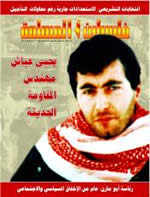
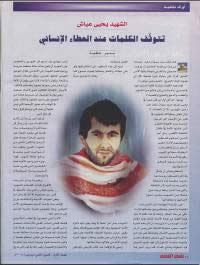


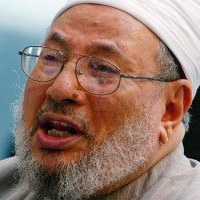
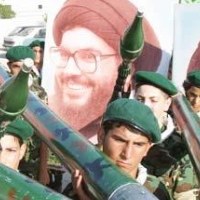
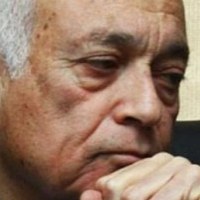
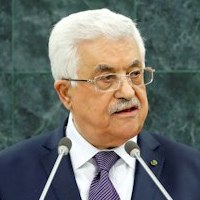




Turning Shaheeds Into Role Models #israel #terrorism #jihad #jcot http://j.mp/diZpYM
RT @CrethiPlethi: Turning Shaheeds Into Role Models #israel #terrorism #jihad #jcot http://j.mp/diZpYM
[…] This post was mentioned on Twitter by Elisabeth, Crethi Plethi. Crethi Plethi said: Turning Shaheeds Into Role Models #israel #terrorism #jihad #jcot http://j.mp/diZpYM […]
RT @CrethiPlethi: Turning Shaheeds Into Role Models #israel #terrorism #jihad #jcot http://j.mp/diZpYM
[…] Read more here and here. […]